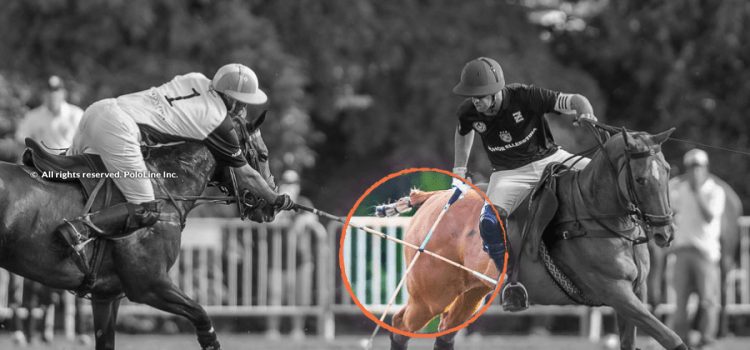The act of obstructing an opponent’s swing with your stick is known as ‘hooking,’ and it is a defensive action, a way of interfering with your rival’s game during the match. According to the rulebook, a player’s stick can only be hooked as they go to hit the ball.
Hooking an opponent’s stick is done for several reasons:
1) To prevent them from hitting the ball.
2) To stop them from hitting the ball and then divert the ball and play.
3) To stop them from hitting the ball, so that one can keep possession.
Hooking a stick is an act that must be carried out with timing and precision.
Depending on our position relating to our opponent, we can hook the stick in the following instances:
-Always from behind the opponent, or on the same side as where the ball is. Otherwise, we will commit a foul.
-It is possible to hook offside, being behind the horse, in the same line, and hooking in the same angle as the hit.
-One can hook on the nearside from the correct position.
-One can also hook under the horses neck, providing the proper positing is maintained.
-One can hook, with the stick down, a player who is about to hit the ball on the nearside.
-It is also possible to fake a hit to avoid a hook. This forces the player looking to hook to stretch as far a possible to reach their opponents.
-Hooking the start of a backhander is also allowed, but only if it is done below the shoulder level of the player attempting to strike the ball.
Under no conditions is a player allowed to hook a stick by hitting his opponent’s stick. The stick can only be used to interfere with a swing, not to hit another stick. It is the umpire’s job to differentiate between the two.
A good hook can be as effective as a good strike or a good ride-off. The objective is to prevent the opposition from passing the ball or keeping possession.
Before hooking a stick, a player must know what will happen to the ball if it is left behind, in other words, who continues with the play. The response must be immediate. If the hook is made on the player’s final strike before goal, a simple hook can change the match.
The most effective hooks are those that halt a strike with a large angle between sticks. While a hook done in the same plane as the strike is effective, many times the hook is missed because of a lack of angle between the sticks.
A hook made under the neck of the player’s horse offers great timing and maximum angle when it comes to contact, making it is a very effective play. While is can be considered dangerous, and this can lead us to think that hitting the ball in this way is also risky, it is in fact a permitted play and one that is highly effective.
The hook is carried out under the horses neck and at the height of the opponent’s stirrup.
This allows us to use the rebounding force of the stick to gain contact with the ball and divert the line, eliminating two opponents in one action.
Often, to avoid a hook, we are forced to move the ball from the opponent’s striking plane, once they have already initiated their swing, so that they cannot establish contact with the ball. The effect is similar to that of a hook, but here we use the ball to avoid the opponents strike.
